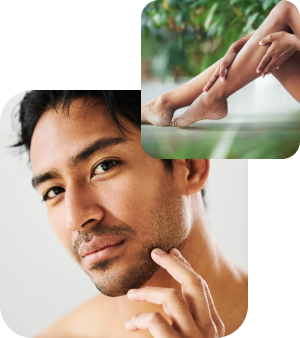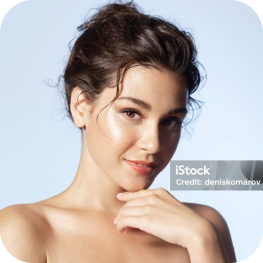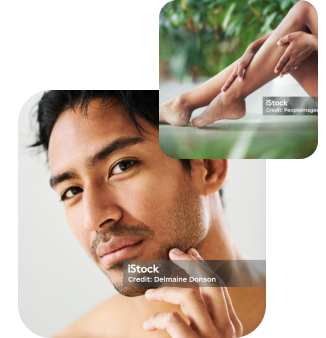Laser Treatment for Rosacea

Rosacea or rosacea disease is a chronic inflammatory skin condition that typically affects people aged 30 and over. It manifests on the face with intense redness, vascular dilation, and inflammatory papules. It’s a skin condition with flare-ups and remissions that appears in both genders, though more commonly in women.
The treatment for rosacea with the Ellipse Laser from the Nordlys-Candela company, which we have at Derma Hair Clinic, is based on selective photothermolysis.
Immediate Results
Painless Procedure
Suitable for All Ages & Body Areas
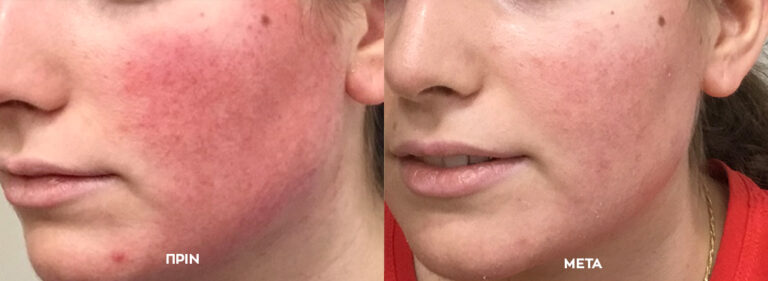

How does the laser work?
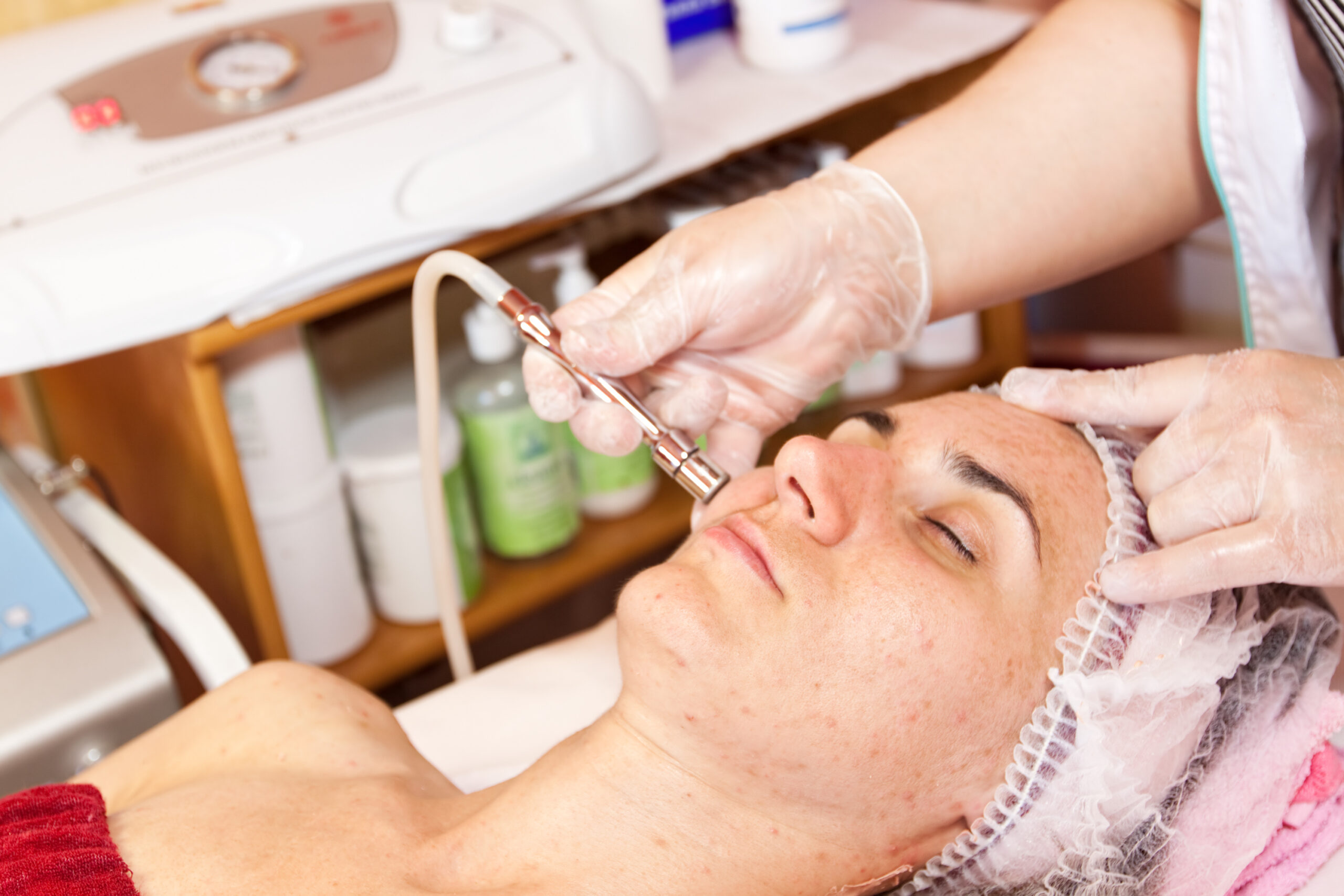
It is applied to skin types with a phototype from one to four. It is indicated for diffuse redness and small blood vessels that appear on the face, cheeks, and nose, which are symptoms of rosacea.
The laser targets hemoglobin, which is found in the small blood vessels of the face. This is where acne is visible, and the treatment is carried out with the PR head at 530-750 nm. At this wavelength, many clinical studies have shown that hemoglobin and oxyhemoglobin exhibit maximum absorption, yielding the best results. However, the PR head may not be suitable for sun-tanned skin or for phototypes greater than type 3.
Expression of Interest Form
Error: Contact form not found.
Instructions Before Laser Treatment for Rosacea
- It is essential to avoid sun exposure, tanning, and solarium sessions for one month before starting laser treatment.
- Avoid using anesthetic creams, around the eyes, in the mouth, and generally on the skin, before starting the treatment.
- Often, we suggest a test application on selected areas of the face. Our goal is to find the most effective and efficient parameters for our treatment.
How does the laser work?
The applicator-head of the Ellipse Candela laser is made of sapphire crystal. Before starting treatment, a special gel is applied to the face to protect the skin’s surface. The patient will feel a slight warmth in the areas where the treatment is applied. This sensation disappears completely once the treatment is complete, and the patient can return to work or their activities immediately. We strongly recommend using sunscreen for at least 15 days.
Beyond the temporary disappearance of redness, there is also a localized reaction in the skin’s hue, where the skin may take on a more purple tint. The outcome is evaluated after 15 days or a month, depending on the issue at hand. Typically, we recommend two to three sessions per month. This leads to the desired result, which is a face without redness. The effect can last for many months and, for some patients, several years.
FAQ
The main symptoms of rosacea are intense redness on the forehead, nose, cheeks, and chin. It is often accompanied by pustules and papules, and it can cause a burning sensation, swelling, and eye irritation. Although it primarily affects the face, the presence of broken blood vessels on the face is an indication of the sensitivity of the skin’s capillaries. It can also appear on the neck, chest, or scalp. The diagnosis of rosacea is made by a dermatologist after evaluating the clinical characteristics of the skin.
Rosacea, also known as rosacea disease, is divided into four categories. In erythematotelangiectatic rosacea, patients experience redness and, in some cases, telangiectasias in the central part of the face. In papulopustular rosacea, the symptoms remain the same but are accompanied by papules and pustules. Another type of the disease is phymatous rosacea, which mainly appears in men and causes rhinophyma. Finally, ocular rosacea is characterized by severe eye irritation. People with ocular rosacea experience conjunctivitis, eyelid erythema, itching, and burning.
οφθαλμική ροδόχρου ακμή εμφανίζουν επιπεφυκίτιδα, βλεφαρικό ερύθημα, κνησμό και καύσο.
The causes of adult acne are not fully understood. However, many studies have shown that the presence of microorganisms such as Demodex folliculorum and genetic predisposition play a significant role. Other factors that can influence the flare-up of rosacea may include extreme temperatures, stress, alcohol consumption, and certain medications. These factors can cause the blood vessels in the face to dilate.
Like common acne, rosacea also affects the mental well-being of patients. Although it is a chronic condition, there are treatments that help reduce flare-ups. The most basic is facial cleansing and moisturizing, which are essential, along with avoiding factors that can trigger rosacea.
Then, topical treatment with sulfacetamide lotion can be used to reduce redness and inflammatory lesions. During this therapy, the antibiotic metronidazole can be prescribed to treat papules and pustules, or the use of azelaic acid. In addition to topical treatments, antibiotics like tetracyclines, macrolides, and metronidazole can be prescribed. Finally, treatment with isotretinoin can be significantly helpful.
Unfortunately, none of these treatments can completely eradicate the disease, but they can suppress it for a certain period. To date, the most innovative method for managing rosacea is the Ellipse Laser by the Nordlys-Candela company, which in just a few sessions can eliminate all symptoms. This treatment is available at our Derma Hair Clinic and is very effective.
Είπαν για εμάς
EXCELLENTTrustindex verifies that the original source of the review is Google. Τον εμπιστεύομαι χρόνια!! Είναι ένας εξαιρετικός επιστήμονας με πραγματικό ενδιαφέρον και γνώση για τον ασθενή!!Τον συνιστώ ανεπιφύλακτα τόσο για ιατρικά όσο και τις αισθητικές υπηρεσίες που προσφέρει ο χώρος.Trustindex verifies that the original source of the review is Google. Εξαιρετικός ιατρός, άριστα καταρτισμένος! Το ίδιο και όλο το προσωπικό! Πολλά μπράβο για όλη του την ομάδα!!Trustindex verifies that the original source of the review is Google. Εξαιρετικός γιατρός, τον συστήνω ανεπιφύλακτα!!Trustindex verifies that the original source of the review is Google. Excellent serviceTrustindex verifies that the original source of the review is Google. Έκανα αφαίρεση σπιλων με τον γιατρό και έμεινα απόλυτα ικανοποιημένη και από την διαδικασία αλλά και από την μετέπειτα παρακολούθηση μέχρι την αποθεραπεία !!!! Ευχαριστώ πολύ ❤️

HAIR TRANSPLANT;
Book a FREE 20 minute consultation for Hair Transplant!
